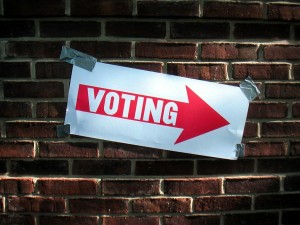Letters to the editor of a local newspaper can be another effective way of influencing your MOCs, as well as other citizens. As this post from the Union of Concerned Scientists (UCS) says,
Writing a letter to the editor (LTE) of your local or regional newspaper is an effective and easy way to reach a large audience with your message. LTEs are printed on the editorial page, which is one of the most read pages in the paper. Congressional staffers also tell us that members of congress keep a close eye on media coverage, including LTEs, in their local papers so they can keep a “pulse” on issues of importance to their constituents. Having a strong letter published helps you reach both a wide public audience and your elected officials with the same effort! Even if your letter is not published, it is important for educating and persuading editors. The more letters they receive on a given topic, the more likely they are to dedicate more time in their newspaper to that issue—both on the editorial page and in news articles. It clearly expresses the issue’s importance to the community.
Here are some tips adapted from the UCS for writing an effective LTE:
- Respond to an article, editorial, or op-ed in the paper. Begin your letter by citing the original piece by name, date, and author.
- Follow the newspaper’s guidance on how to submit an LTE. Include your letter in the body of the email, and do not include attachments.
- Be timely. Respond to an article within 2-3 days of its publication.
- Share your expertise. If you have qualifications relevant to the topic you’re addressing, be sure to include that in your letter.
- Refer to the MOC you’re trying to influence by name, which ensures his/her staff will bring your LTE to the MOC’s attention.
- Keep your letter short, focused, and interesting. In general, letters should be under 200 words, 150 or less is best; stay focused on one or at most two main points; and get to the main point in the first two sentences. If possible, include interesting facts, relevant personal experience, and any local connections to the issue.
- Refute, advocate, and make a call to action. Open your letter by refuting the claim made in the original story the paper ran (or by agreeing with it, if you agree and have additional points to offer). Then use the next few sentences to back up your claims and advocate for your position. Try to focus on the positive. Wrap up with your call to action, explaining what you think needs to happen now. If appropriate, point readers to a source for additional information or to engage in action.
- Be sure to include your name, address, and daytime phone number; the newspaper may want to contact you before printing your letter.
- If your letter is printed, clip it out and send it to your MOC with a brief cover note.
Return to the main Advocacy page to explore other tools available for advocacy.




